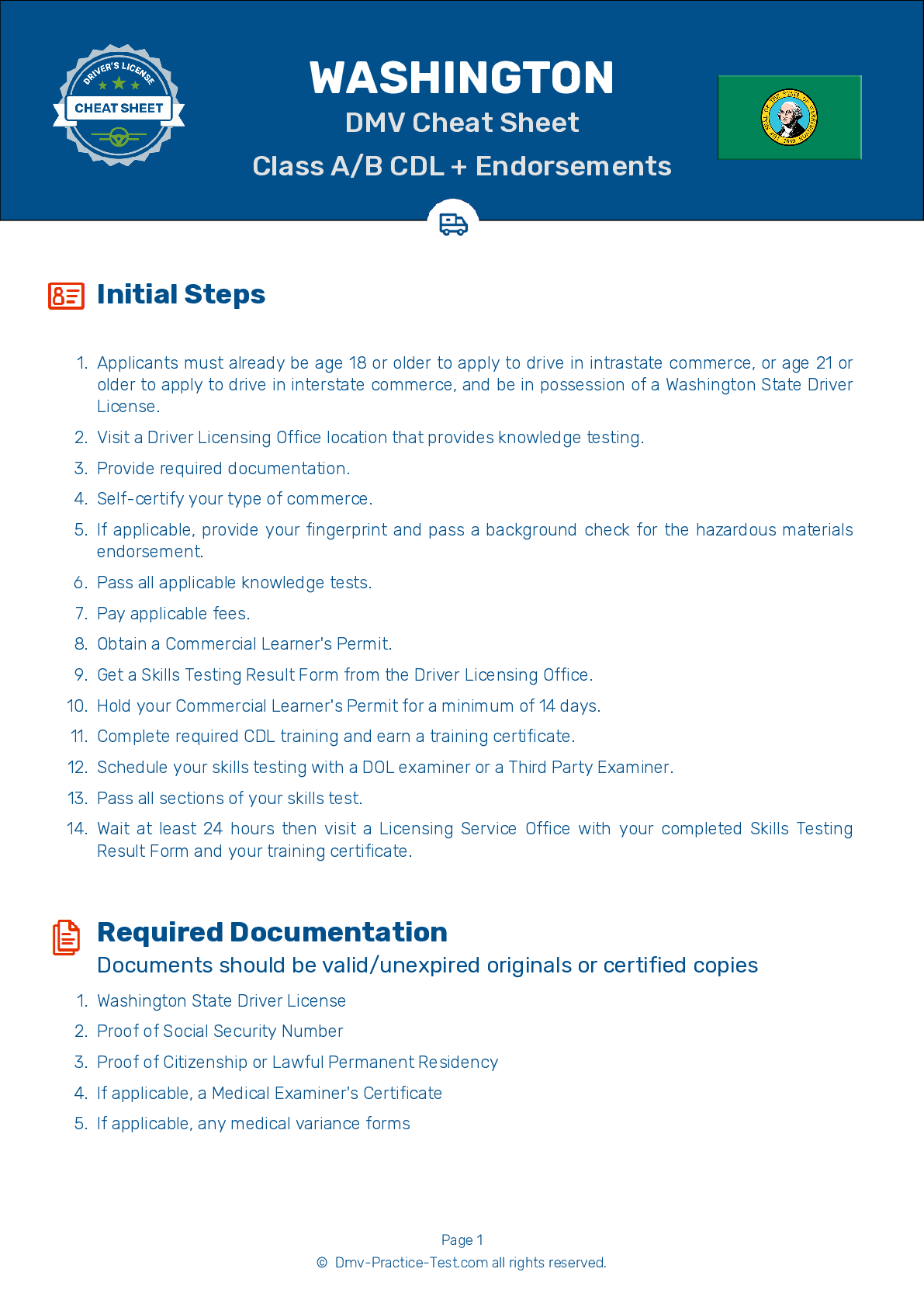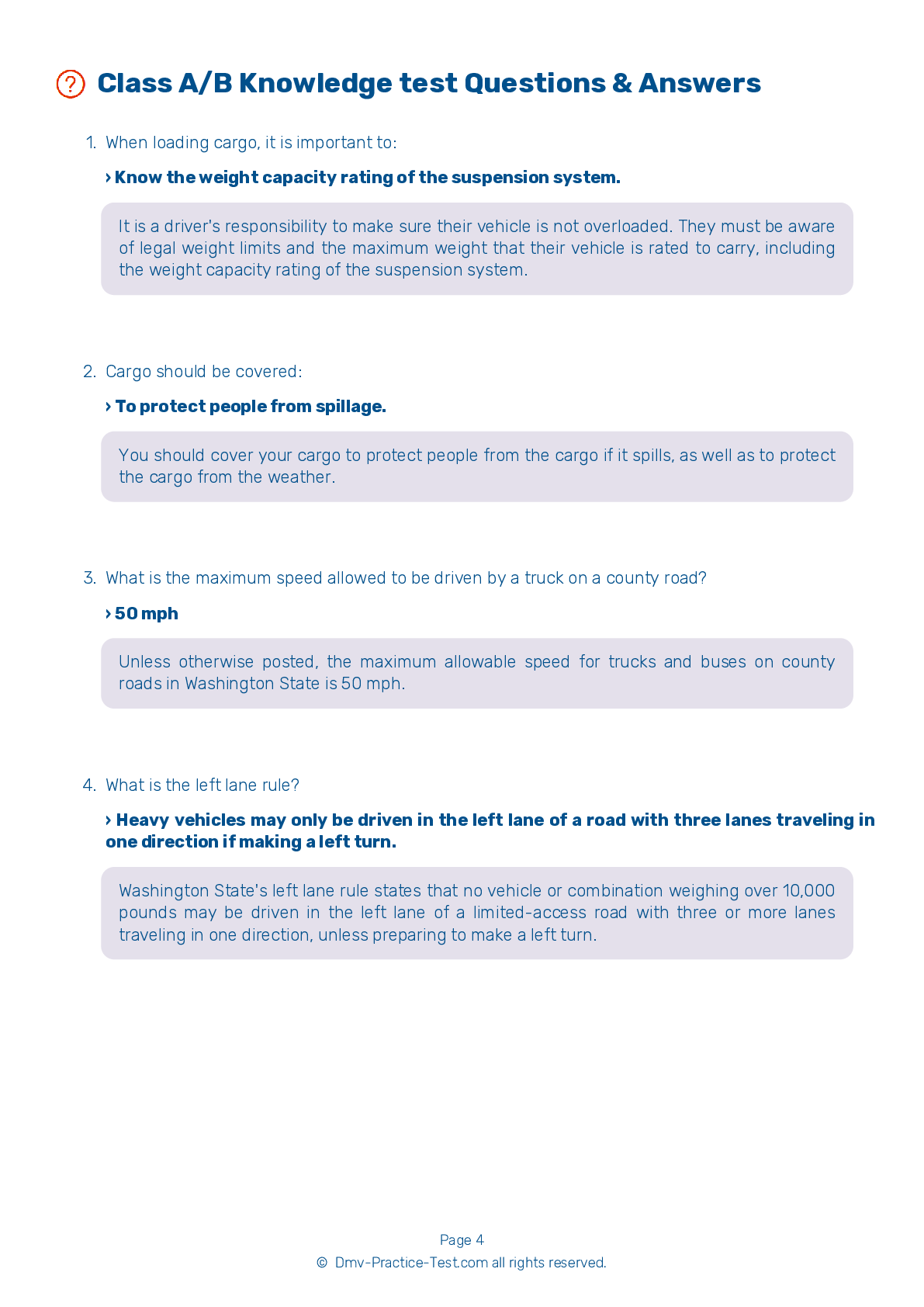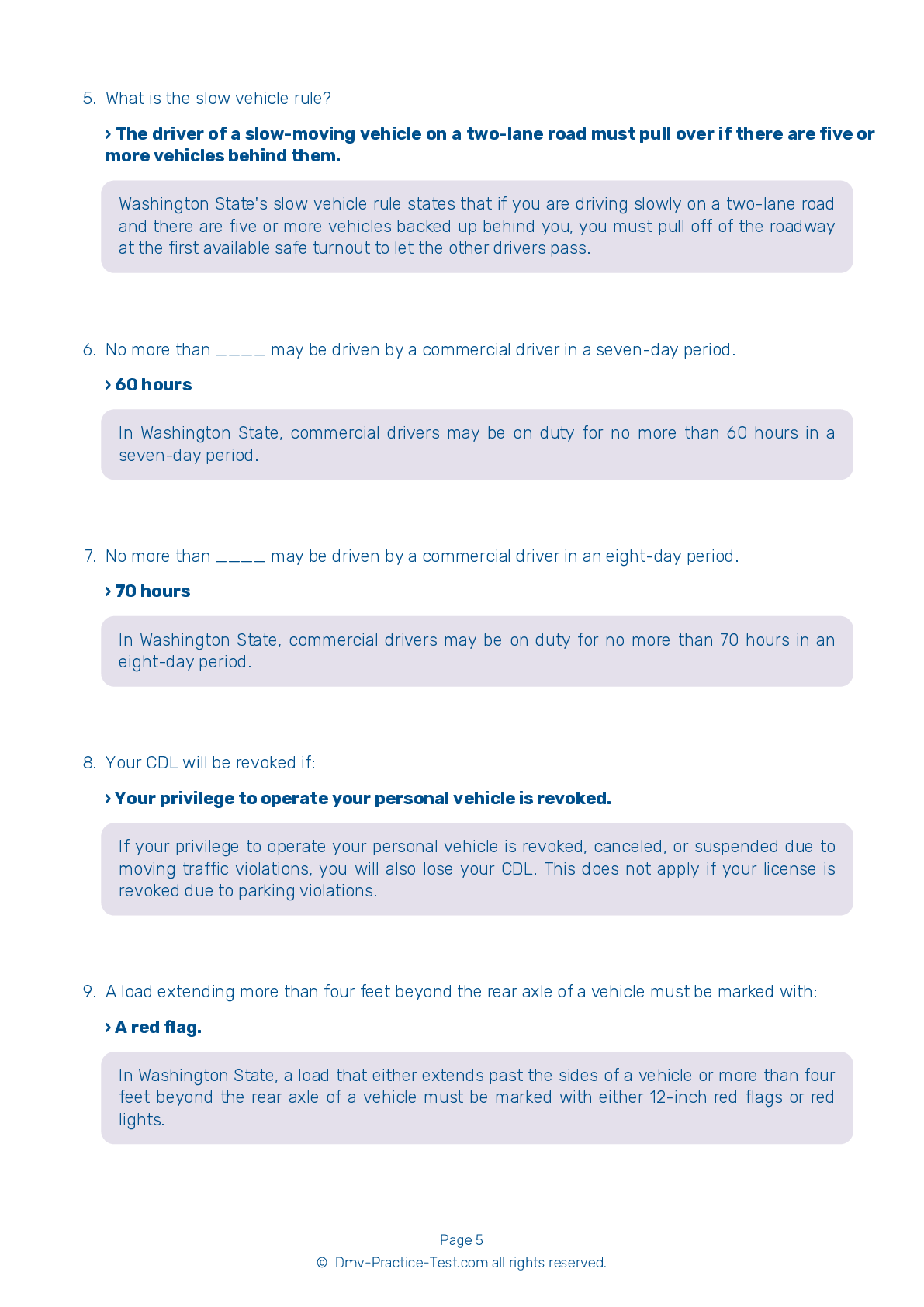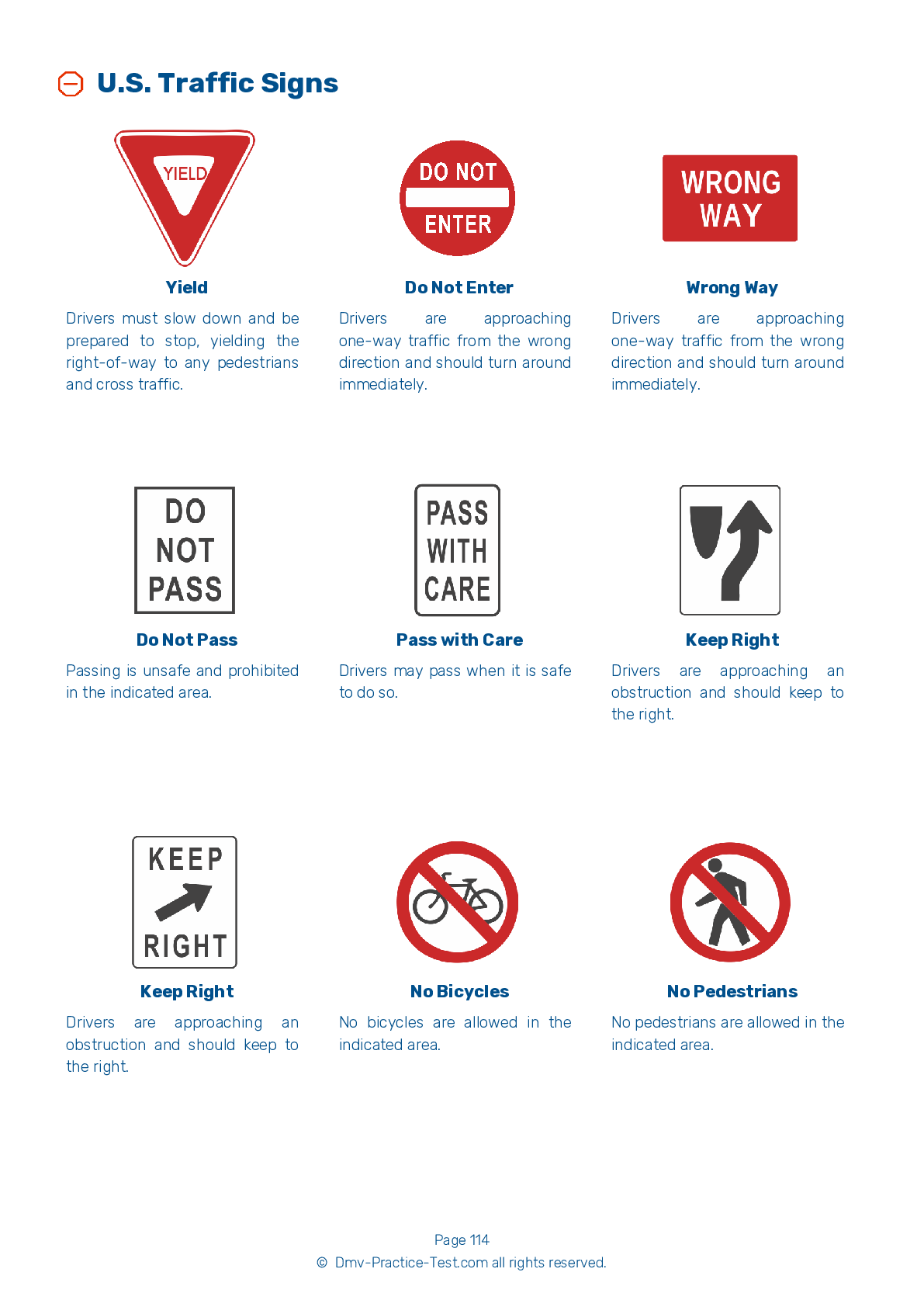Class B Driving Test | Washington 2025 #1 Page 2 of 7
Train for FREE online with our Washington class B license test. The official exam test consists of several obligatory parts, with all of them checking your knowledge of different blocks of road rules. If you need to obtain a WA CDL class B permit in 2025, practice as much as possible. Free sample tests published on our website will help you check and improve your knowledge and boost your grades. Please bear in mind that CDL class B requirements may vary from state to state.
8 . Friction in an S-cam brake is caused when the brake shoes and linings:
Friction inside a brake drum is caused when the brake shoes and linings push against the inside of the drum. The friction in the drums will slow and stop the vehicle.
9 . You may:
A person cannot have more than one driver license at a time. States share information through a computer database to ensure that no person has more than one license. Violation of this law could result in fines or jail time.
10 . You will be denied a HazMat endorsement if:
You will be denied a hazardous materials endorsement, or lose an existing endorsement, if you renounce your U.S. citizenship; are not a lawful permanent U.S. resident; are wanted for, indicted for, or convicted of certain felonies; are judged mentally defective or are committed to a mental institution; or are deemed by the Transportation Security Administration (TSA) to pose a security threat.
11 . Cargo should be covered:
You should cover your cargo to protect people from the cargo if it spills, as well as to protect the cargo from the weather.
12 . Reading a text message while driving is:
Sending and reading text messages while driving is both dangerous and illegal.
13 . Of the following, which is not a recommended way to spot potential signs of trouble?
During a trip, you should regularly make checks to ensure that your vehicle is operating properly. Check the instrument panel and gauges; look at your mirrors; and examine the tires, cargo, and lights. Use all of your senses and be alert for anything that could be an early indication of trouble.
14 . When leaving your vehicle unattended:
In general, you should always use the parking brake when parking your vehicle. However, you should not apply the parking brake if your brakes are very hot or if your brakes are wet and temperatures are below freezing.
See the exact questions that will be on the 2025 Washington DMV exam.
99.2% of people who use the cheat sheet pass the FIRST TIME
Lillian MCcranie explains how our CDL study guide was helpful in passing the exam and recommends it to everyone.
Cameron tells us how he purchased the CDL exam, and found it to be a useful tool which helped him pass the exam and find a job.



